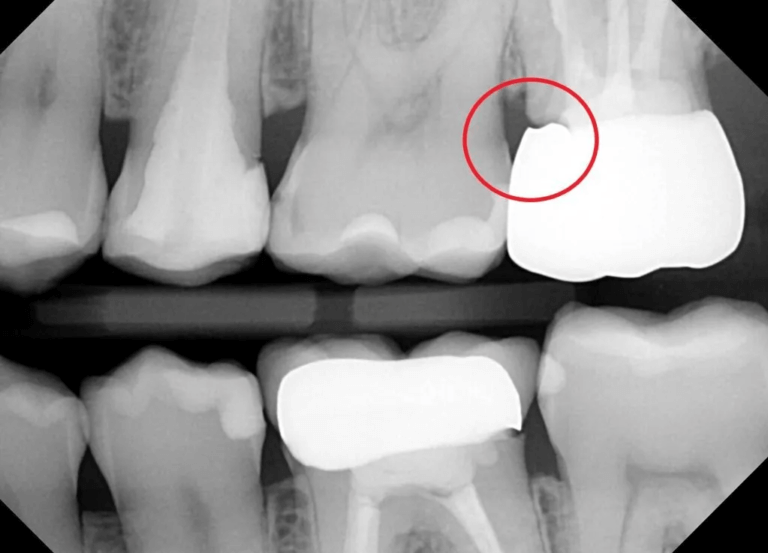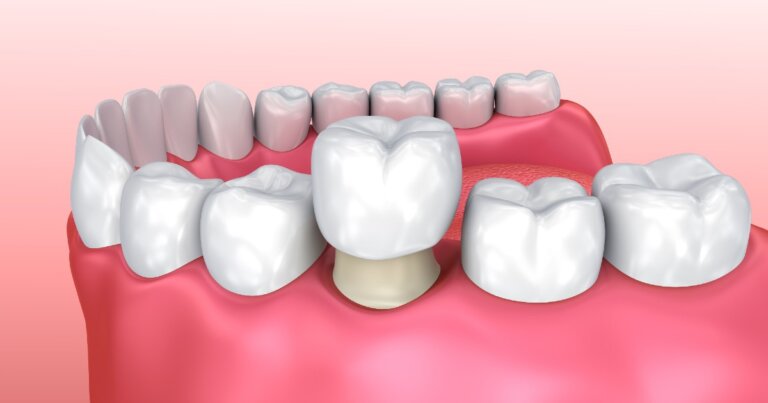Dental Crown Open Margin

What Is A Dental Crown Open Margin?
A Dental Crown is a protective cap designed to restore a tooth’s shape, size, and function, typically covering a damaged or decayed tooth. For a crown to be effective, it must fit tightly against the tooth without leaving gaps. A well-fitted crown provides a seamless transition between the crown and tooth, preventing food particles and bacteria from entering.
However, sometimes an issue called a “dental crown open margin” can occur. This happens when there is a gap or space between the crown and the tooth, which may only be detectable through a dental X-ray. Open margins can be caused by poor crown design, improper cementation, or other issues, and if not treated, can lead to tooth decay, gum disease, dental pain, or even tooth loss.
If you suspect an issue with your dental crown, it’s essential to address it promptly. Here’s what you need to know about dental crown open margins:
- Why Do I Have A Dental Crown Open Margin?
- Signs And Symptoms Of A Dental Crown Open Margin
- Treatment Options For A Dental Crown Open Margin
- Managing A Dental Crown Open Margin Until You Can See The Dentist
- Frequently Asked Questions About Dental Crown Open Margins
If you have questions about a Dental Crown Open Margin or other dental problems, please contact us for more information.
Why Do I Have A Dental Crown Open Margin?
There are several potential causes for an open margin under a dental crown:
- Poor Crown Design: The dental laboratory must design the crown to fit the tooth’s margins perfectly. Inaccuracies during the impression process—such as using outdated physical impressions instead of more accurate digital scanners—can lead to a poorly fitted crown.
- Improper Crown Placement: Open margins can result from improper crown cementation. This technique-sensitive procedure requires the crown to adapt perfectly to the tooth. If not positioned correctly, a gap may form between the crown and the tooth.
Identifying the cause of the open margin is crucial to determine the right treatment. If you suspect an issue with your crown, contact your dentist for an evaluation. If you have further questions about Open Margins under a Dental Crown, please contact us.
Signs and Symptoms of A Dental Crown Open Margin
Wondering if you might have an open margin? Here are some common signs:
- Tooth Sensitivity: You may feel discomfort or sensitivity when consuming hot or cold foods and drinks.
- Tooth Pain: Pain when chewing or biting down may indicate a gap between the crown and tooth.
- Gum Swelling: Swollen or tender gums around the crown can signal an open margin.
- Food Trapping: If food gets trapped between your crown and gums frequently, it may be due to an open margin.
- Visible Gap: You may be able to see or feel a gap between the crown and your tooth.
- High Crown: If the crown feels higher than the rest of your teeth when biting, it may not have been seated correctly.
- Discoloration: Dark staining or a grayish color under the crown could indicate decay or infection due to an open margin.
If you notice any of these symptoms, schedule an appointment with your dentist as soon as possible. If you have further questions about signs and symptoms of a Dental Crown Open Margin, please contact us.
Treatment Options for A Dental Crown Open Margin
Once your dentist confirms an open margin, there are a few ways to address the issue:
- Refitting the Crown: In some cases, your dentist may be able to remove and clean the crown, then re-cement it to eliminate the gap.
- Crown Replacement: If the crown is too damaged or poorly fitted, your dentist may recommend replacing it with a new one.
The treatment plan will depend on the severity and cause of the open margin. Prompt treatment is essential to prevent further damage to your tooth. If you have further questions about treatment options for a Dental Crown Open Margin, please contact us.

Managing A Dental Crown Open Margin Until You Can See the Dentist
If you suspect an open margin before your dental visit, follow these tips to manage the issue:
- Maintain Good Oral Hygiene: Brush and floss gently around the crown to keep it clean and prevent further decay.
- Use Pain Medication: Over-the-counter pain relievers like ibuprofen or acetaminophen can help with discomfort.
- Avoid Eating on the Affected Side: This will prevent irritation or damage to the open margin area.
These measures can help manage symptoms temporarily, but it’s important to see your dentist for a permanent solution. If you have further questions about how to manage and treat a Dental Crown Open Margin, please contact us.
Frequently Asked Questions About Dental Crown Open Margins
- What are the risks associated with an open margin?
An open margin can allow bacteria and food particles to enter, leading to tooth decay, gum disease, dental pain, or even tooth loss.
- How is an open margin diagnosed?
A dentist can diagnose an open margin through a clinical examination and bitewing dental X-rays to detect gaps between the crown and tooth.
- Can an open margin be prevented?
Ensuring precise impressions, proper crown design, and accurate placement can help prevent open margins. Regular dental check-ups are also essential.
- Is an open margin a dental emergency?
While it may not require immediate emergency care, it’s important to address an open margin promptly to avoid further complications.
Addressing an open margin in a dental crown promptly is essential to maintain your oral health and prevent complications like decay or gum disease. If you have further questions about treatment options for a Dental Crown Open Margin, please contact us.

